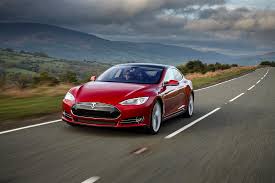
There is no way to win the battle against climate change without a radical reduction in the emissions coming from the tailpipes of cars, buses, and trucks. Transportation accounts for about 30 % of all US emissions, according to the Energy Information Administration. To solve the gas exhaust problem, this market needs transformation as dramatic as the shift from landline to mobile, or train to airplane. Fortunately, smart subsidies can soon cut tailpipe emissions in half, or even more.
At first look, the problem seems colossal. Almost 300 million gas driven cars and trucks parked across the land, close to one per person, make America the most car-centric country in the world. By contrast, only one million have electric motors. In a great year for sales about 20 million gas burners are sold, while in 2018 merely 350,000 electric vehicles were sold. Even if consumers fell in love with the price and performance of electric cars, far too many years would have to pass before the total installed base went from carbon to clean.
The solution is public subsidies that will convert the most heavily driven vehicles to electric motors and develop much more efficient gas motors. These two steps can reduce tailpipe emissions by two-thirds within as few as five years.
Year in, year out, Americans drive about 3 trillion miles. But just three kinds of vehicles, totaling only 15 or 16 million out of the base of almost 300 million, account for one-fourth of all miles. These are the cars and trucks that should become electric, with electric speed. Here they are:
(1) About twelve million trucks account for about 50,000 miles each per year, based on data from the Bureau of Transportation Statistics and the Alternative Fuels Data Center. If all go electric to win the subsidy money, that amounts to over half a trillion miles’ worth of reduced emissions. (2) Based on Uber, Lyft and taxi projections, within four years about 4 million drivers will rack up about 50,000 miles each per year on average carrying passengers. If all these cars were paid enough per mile to go electric, that’s another 200 billion miles cut into tailpipe emissions. (3) Rental cars total more than 2 million a year, each used for about 30,000 miles; if these were all electric, 60 billion miles of emissions disappear. So by subsidizing per mile driven (instead of per car) one fourth of all gas-driven miles can become electric.
Subsidizing the purchase of electric cars instead, while ignoring how many miles they are driven, is much more expensive and far more likely to delay the emissions reduction desperately needed soon.
The other big move is to double fuel efficiency. Reports from the Energy Information Administration have projected that an increase of more than 40% in fuel economy of new vehicles is possible by 2025. If every gas-powered car travelled twice as far per gallon, emissions per mile would be cut in half. That’s because a gallon of gas produces the same emissions, roughly, if it takes the car 25 miles or 50 miles. And the number of miles Americans need to go from here to there stays constant. So doubling fuel efficiency would cut in half the gas-driven miles left after the electrification of shared vehicles. This move will take longer to have effect because the total fleet turns over at a rate less than 10% a year. But subsidies of efficient motors could drive up sales, make dealers happy, and help save the planet.
The result of these moves — subsidizing shared vehicles per electric mile and doubling fuel efficiency — would be to win a big battle against climate change.












More Stories
Automotive Industries (AI) Newsletter April 2025
Bangkok International Motor Show 2025 – The Talk of Sensuous Automotive
Earn GHG reduction values through MOL Pure Car Carrier “Book and Claim (B&C)” service